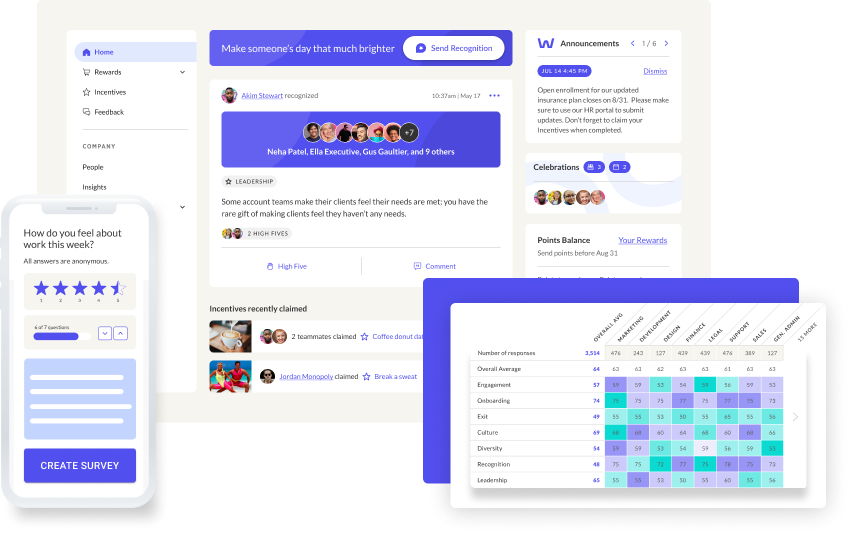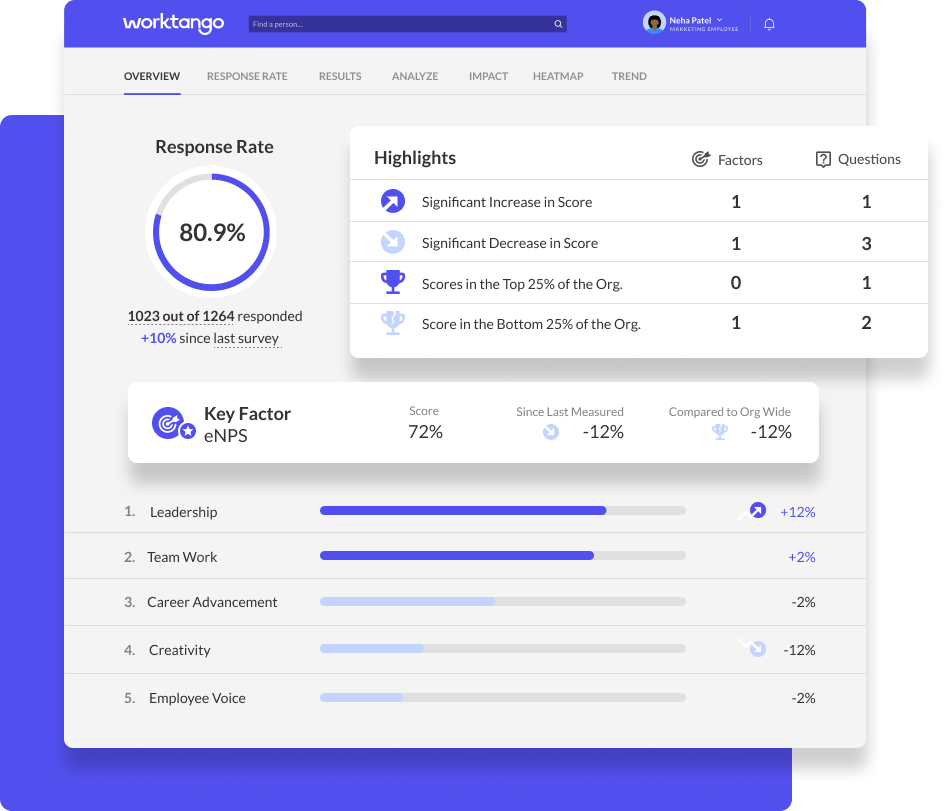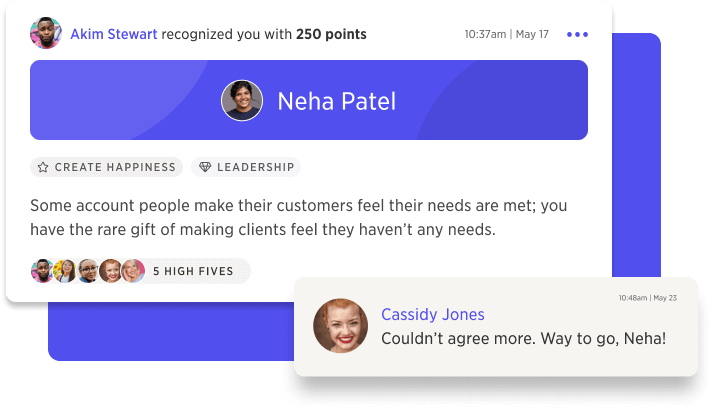Engage, inspire & retain your employees with WorkTango
Discover Employee Surveys & Insights and Recognition & Rewards - available individually or bundled within WorkTango’s holistic Employee Experience Platform.


Surveys & Insights
Employee listening across the entire employee lifecycle
Easily measure engagement and ensure every employee feels heard with unlimited surveys.
Through robust dashboards and insights, your leaders will gain insight into employee sentiment. They can then drive meaningful change with recommended action plans.
Recognition & Rewards
Amplify and incentivize key values and behaviors
Scale and automate your employee recognition & rewards program, track and control costs, and incentivize desired actions.
Save time and heighten the excitement with automated years of service awards, birthdays, and other milestone celebrations.

Start an interactive tour of
WorkTango's Employee Experience Platform

WorkTango’s Employee Experience software has all the capabilities your company needs in one easy-to-use platform: Employee Recognition & Rewards, Employee Surveys & Insights, powerful reporting, analytics, HRIS integrations, and leadership tools.
Improve employee experience with WorkTango
If your employees can maneuver through social media, they’ll easily be able to use WorkTango’s Recognition & Rewards and Surveys & Insights software. We can see results every day, in real-time. The solutions are attainable, affordable, and easy to integrate into your company especially with the level of support behind this platform. Would I recommend WorkTango? I already have, many times.
We wanted to work with a vendor that was reliable, responsive, and supportive… The ease of setting up the survey was essential. In other platforms it can literally take hours to set up a survey. We’re constantly looking for evolution – and wanted a platform that will continue to evolve and change with us for the better.
WorkTango helps the Boston Beer Company create a continuous culture of recognition and appreciation, no matter if team members are remote, in an office, or on the brewery floor.
Helping organizations create an extraordinary employee experience is our passion
Our Passion is to improve (work) lives
Part of a bigger community
Join the WorkTango team
WorkTango's commitment to DE&I


